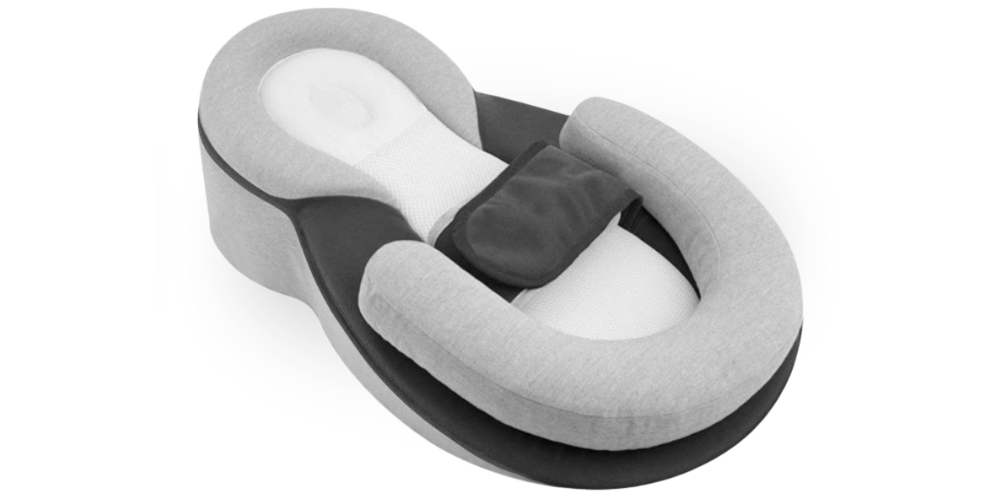Your baby spits up after nearly every feeding. Sometimes it’s just a dribble, other times it feels like half the bottle. You start to wonder — is this normal? Or is it something more serious, like reflux?
You’re not alone in this confusion. Many new parents spend sleepless nights searching for answers. In this article, we’ll help you understand the difference between simple spit-up and infant reflux, what you can safely try at home, and when it’s time to call your pediatrician.
Note: This information is for educational purposes only and should never replace medical advice.
Spit-Up vs. Reflux — What’s Really Happening
Normal spit-up happens because a newborn’s digestive system is still developing. The valve that keeps milk in the stomach (the lower esophageal sphincter) isn’t fully mature yet, so a bit of milk can easily come back up — especially after a big feeding or too much movement.
Typical signs of normal spit-up:
-
Small amounts (a teaspoon or two)
-
Baby remains calm or even smiles after
-
Normal weight gain and plenty of wet diapers
Reflux, on the other hand, is when stomach contents regularly flow back into the esophagus and cause discomfort. It’s more than a laundry issue — it’s a comfort issue.
Possible signs of reflux:
-
Frequent crying or irritability after feeding
-
Arching the back or pulling away from the bottle or breast
-
Coughing, hiccupping, or gagging during feeds
-
Trouble sleeping flat or short, restless naps
Most babies outgrow reflux as their digestion matures, but until then, a few gentle adjustments can make a world of difference.
Quick Self-Check After Feeding
Try observing a few habits that can either help or worsen your baby’s comfort:
1. Burp often.
Every few minutes during feeding can help release trapped air that pushes milk upward.
2. Keep baby upright.
Hold your baby upright for 20–30 minutes after feeding. Avoid bouncy seats or pressure on the belly right away.
3. Try smaller, more frequent feeds.
Large volumes can overload the stomach.
4. Avoid tight waistbands or snug swaddles around the belly.
Pressure increases the chance of reflux.
5. Track patterns.
Note when it happens — time of day, volume, type of milk or formula, your diet (if breastfeeding). Patterns reveal triggers.
Night-Time Feels Worse — Here’s Why
Many parents notice reflux symptoms get worse at night. That’s because babies spend more time lying flat, digestion slows while sleeping, and any trapped air or milk sits closer to the throat. Combine that with exhaustion — both baby’s and yours — and small discomforts feel bigger.
Creating a calm, slightly elevated sleep environment can help digestion and breathing. Always ensure the setup is safe, supervised, and in line with pediatric sleep recommendations.
What Helps (Safely) Today
There’s no single fix, but these gentle steps can bring comfort:
-
Feed your baby when calm, not overtired or crying.
-
Keep the nursery slightly cooler and quiet after feeds.
-
Don’t rush diaper changes right after a bottle.
-
Try a gentle incline (under professional guidance) that supports digestion while keeping airways clear.
Many parents find relief using ergonomic sleep supports that mimic a natural, slightly elevated position. The DreamNest™, designed by pediatric osteopaths, provides that 15-degree incline with anti-roll safety features and breathable materials — helping babies rest more peacefully while parents regain their nights. It’s not a cure, but it’s a comfort solution trusted by thousands of families.
👉 See how DreamNest™ supports calmer, longer rest — try it 100% risk-free for 90 nights.
When to Speak to Your Pediatrician
While mild reflux is common, you should reach out to your pediatrician if you notice:
-
Poor weight gain or weight loss
-
Projectile vomiting
-
Blood in spit-up or stools
-
Persistent coughing, wheezing, or choking
-
Excessive crying or discomfort after every feed
These may signal gastroesophageal reflux disease (GERD) or other underlying conditions that need medical assessment.
FAQs
How much spit-up is normal for newborns?
Small amounts (a few teaspoons) a few times a day are usually normal if your baby is otherwise healthy and gaining weight.
When should I worry about reflux?
If your baby seems in pain, refuses feeds, or isn’t gaining weight, check in with your pediatrician.
Do certain feeding positions help?
Feeding at a gentle angle with baby’s head higher than the stomach can ease digestion — avoid lying flat immediately after.
Can changing formula or diet help?
Sometimes. If you suspect sensitivity, consult your healthcare provider before switching.
When should I call the pediatrician?
If spit-up turns forceful, bloody, or your baby appears distressed or lethargic, seek medical advice right away.
Conclusion: You’re Doing Great
Every new parent questions what’s normal. Remember, most babies experience spit-up — it’s part of adjusting to life outside the womb. Understanding the signs, keeping routines calm, and using safe comfort solutions can make things easier for both of you.
You’re not alone, and you’re doing an incredible job.



